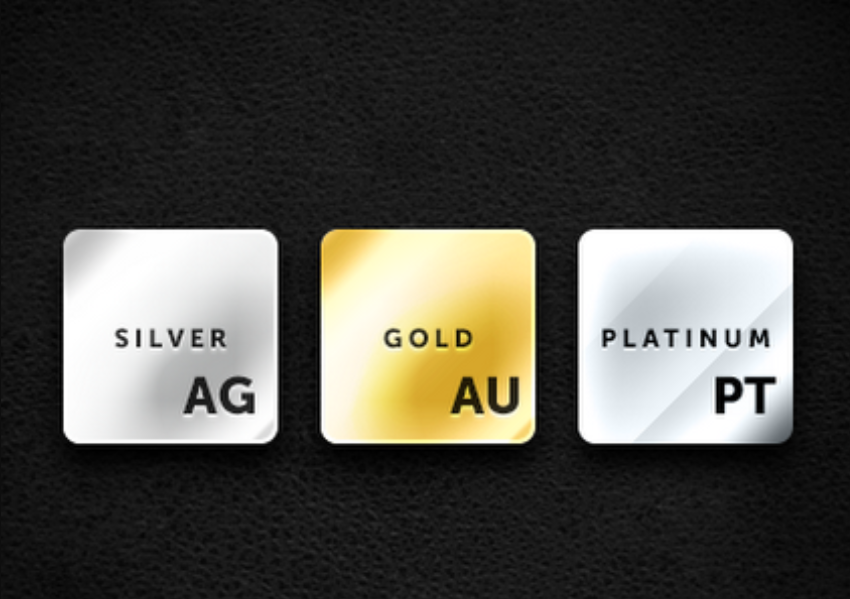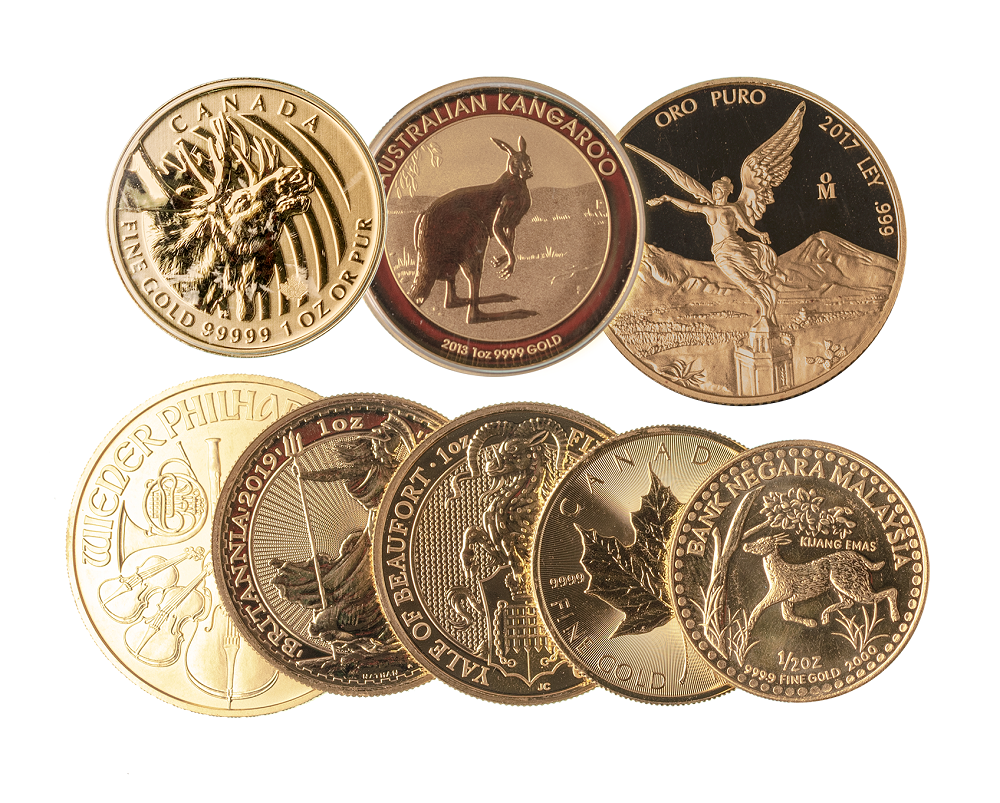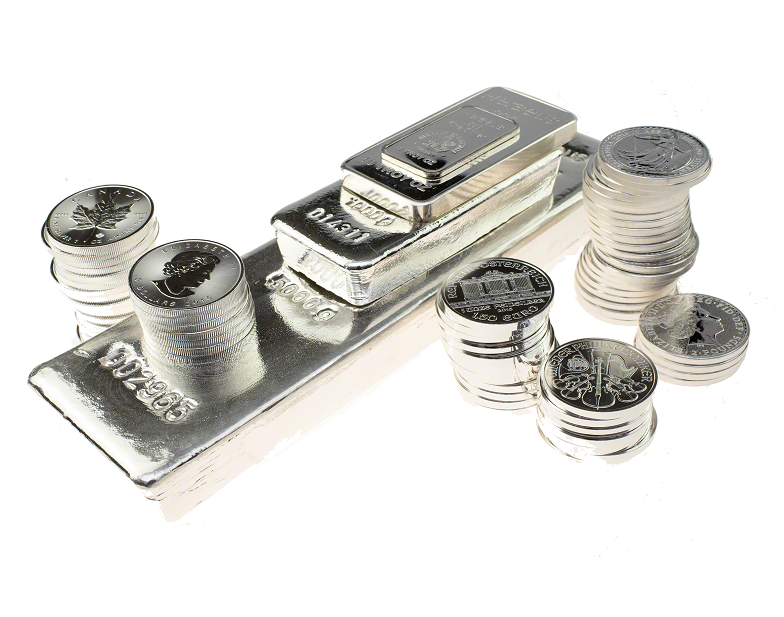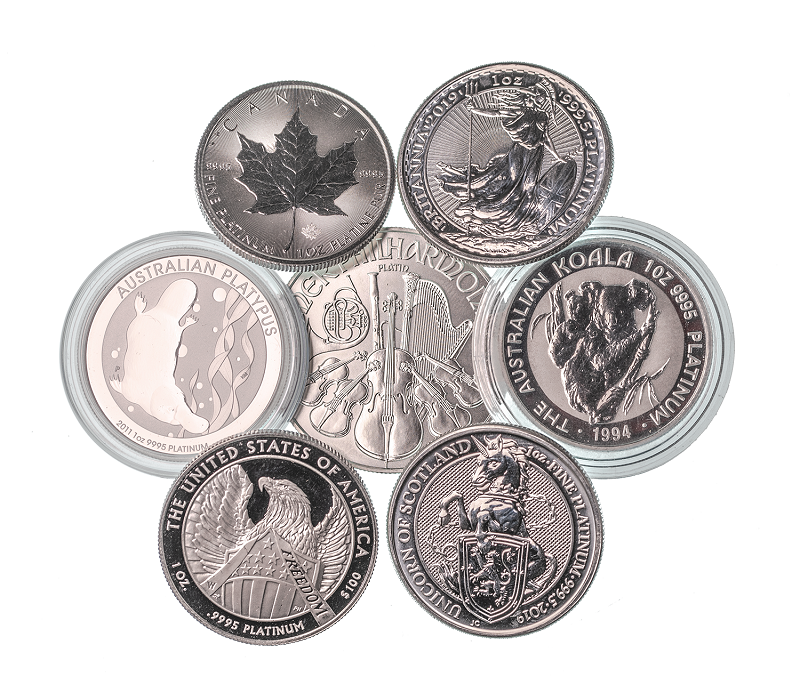Should I Invest in Gold, Silver, or Platinum Bullion?
A common question for investors new to precious metals is whether to purchase gold bullion, silver bullion, platinum bullion, or some combination of all three. All three metals are investment precious metals, all three metals are chemical elements, and all three metals are available to purchase in the form of high purity investment grade bars and coins produced by the world’s leading precious metals mints and refineries.
In some cases, your investment decision will come down to a personal preference for saving in one precious metal versus another, while in other cases, investors consider the diversification benefits that can be gained by holding a diversified portfolio across two or three of the precious metals, or as a distinct asset class within a wider investment portfolios.
While gold, silver and platinum share some common physical and usage characteristics, they are distinct enough in that they have different supply and demand drivers, and each metal is driven by different price drivers. This means that the prices of each of the three metals perform differently over time.
This in turn means that the price correlations of the three metals versus each other and versus other assets such as stocks and bonds will provide diversification benefits when you add an allocation of some or all three of the precious metals to your existing investment portfolio of other financial assets and securities.

Characteristics and Uses
Physical gold, physical silver, and physical platinum are tangible assets produced from mining. These metals are difficult and costly to extract, and costly to refine and fabricate into high purity bullion bars and coins. Hence, all three precious metals have inherent value, and in the form of investment grade bullion have liquidity and trust in the world’s precious metals marketplaces.
Physical gold and physical silver have been mined since antiquity and have a very long track record of being used as money, with gold coins and silver coins used as circulating money in many civilizations for long periods of recorded history. In contrast, platinum as an element was only discovered relatively recently in the 1700s.
Nowadays, all three precious metals are used widely in the jewellery and luxury goods markets. The three precious metals are also widely used in industry and technology. This is due to the varied and useful chemical properties of the three metals, another factor which adds to their overall demand. As investment assets, physical gold, physical silver and physical platinum are free also of counterparty risk and default risk, since they are not issued by any central bank or government entity which could default or go bankrupt.
Regarding gold, the world’s central banks also drive gold demand as they hold large quantities of gold bars as monetary gold investments within their reserve asset portfolios. These strategic gold reserves provide a store of value, act as a form of financial insurance against financial crises, and allow the central banks to diversify their investment portfolios. While gold performs this traditional role, few central banks hold silver, and even fewer if any central banks currently hold platinum metal – although Russia for example holds platinum in its strategic state reserves.
However, in the commercial investment world, all three precious metals are very popular with institutional and retail investors alike, and all three metals are traded on physical precious metals exchanges and futures markets. Furthermore, all three metals are available for investment in the form of precious metals backed Exchange Traded Funds (ETFs) and similar products. However, while these ETF products provide exposure to the price movements of the underlying metals usually denominated in US dollars, they do not provide physical ownership of the underlying metals. Only outright purchase of distinct precious metals bars and coins provides the ownership benefits of precious metals where you the owner have legal title to your own bars and coins.
LBMA and LPPM Refiners
Gold, silver and platinum are also supported and promoted by established industry bodies which represent the mining, trading and refining interests of each metal globally. On the mining side, these include the World Gold Council, the Silver Institute and the World Platinum Investment Council. In the refining sector, these include the London Bullion Market Association (LBMA) and the London Platinum and Palladium Market (LPPM).
Both the LBMA and LPPM are responsible for such activities as coordinating daily pricing benchmarks for each of the metals, liaising with financial regulators and governments, and for maintaining lists of gold, silver and platinum refiners around the world which adhere to high quality standards for the refining and production of precious metals. These refiner lists are known as the Good Delivery Lists of precious metals refiners.
Bullion Bars and Bullion Coins
With a wide range of investment grade bullion bars and bullion coins available on the market, purchasing physical precious metals is a very simple process.
Gold bullion coins, silver bullion coins and platinum bullion coins are minted by the world’s leading precious metals mints. These mints include the Royal Canadian Mint, Perth Mint, US Mint, Austrian Mint, and Royal Mint. Gold bullion bars, silver bullion bars, and platinum bullion bars are fabricated by the world’s leading precious metals refiners. These include Swiss precious metals refiners such as PAMP, Argor-Heraeus and Valcambi, the German refiner Heraeus, all of which are on the LBMA and LPPM good delivery lists for refining investment precious metals.

High purity bullion bars and coins are exempt from Sales Tax (GST)
Another attractive feature of saving and investing in bullion bars and bullion coins is that investment grade gold, silver and platinum bars and coins are exempt from Singapore’s Goods and Services Tax (GST). GST is the Singaporean equivalent of Value Added Tax (VAT) familiar to many countries.
This means that when you buy and sell bullion bars and coins in Singapore, the transactions are exempt from GST. Singapore’s government have defined a very wide range of bullion bars and bullion coins as qualifying Investment Precious Metals (IPM) across the three precious metals of gold, silver and platinum, and all of these products are exempt from GST.
Therefore, no matter whether your preference is for gold bars gold coins, silver bars, silver coins, platinum bars, or platinum coins, or some combination of all three metals, the GST exemption on precious metals means that as an investor, you will never pay any sales tax when buying and selling investment grade bullion in Singapore.
An insight into Customer Preferences
From BullionStar’s experience, our customers span all three precious metals and there will always be customers who prefer gold to silver, or prefer bars to coins, or vice-versa. Each year, BullionStar publishes its annual financial performance alongside details of sales by product categories, so a look at these figures can give some idea as to customer preferences and transactions across product types.
For the financial year to the end of June 2018 (FY 2018), gold bars and gold coins represented over 75% of BullionStar’s sales by value, with silver bars and silver coins representing the bulk of the remainder, and platinum bars and coins representing a marginal 1% of sales. Of the gold products, four-fifths by value represented gold bars, versus one-fifth by value for gold coins. Within the silver product categories, just over 80% by value represented silver bars with the remainder comprising silver coins.
The most popular gold bars sold were 100 gram gold bars and 1 kilogram gold bars. In the gold bullion coin category, the most popular gold coins sold were Canadian Gold Maple Leaf coins followed by Australian Gold bullion Kangaroo coins. In the silver bar category, 1 kg silver bars were the most popular bar size followed by 100 oz silver bars. In the silver bullion coin segment, Canadian Silver Maple Leafs coins were the best seller, followed by the US Mint’s American Silver Eagles.

Precious Metals Demand Drivers and Supply Sources
Since each of the three precious metals of gold, silver and platinum exhibits a different supply and demand equation and a different mix of demand drivers, the economics of each metal will be different, and the relative price movements of each metal over both the short and long term will be different to each other.
Given that silver is relatively more abundant in the earth’s crust than gold and platinum, more of it is mined each year, and its higher availability means that it will have a lower price than both gold and platinum. For example, new gold supply from mining is about 3200 tonnes per annum, whereas new silver supply from mining is about 27,000 tonnes per year. New platinum supply from mining is approximately 190 tonnes per annum.
Annual gold supply traditionally consists of mine production, gold recycling, and gold loans sourced from central bank gold stocks. On the demand side, gold’s demand drivers are gold jewellery production (roughly 50% of demand), central bank gold purchases (15%), gold bar and gold coin and other investment demand (27%) , and industrial demand for gold (8%). With gold jewellery often used for investment, for example in India, the demand for gold is predominantly investment-based across most of its demand drivers.
The supply sources for silver and platinum are essentially the same as for gold, consisting of mine production and recycling, but without central bank lending, given that central banks do not hold silver and platinum stocks.
The demand drivers for silver are notably different to those for gold, and consist of jewellery and silverware demand (25%), physical investment demand (15%), and a combined 60% representing industrial demand (which includes demand from a wide range of applications in the electrical and electronic, alloys and solders, photographic, and solar panels sectors).

Platinum’s demand drivers are also very different to those of silver and gold, are more variable, and comprise demand for platinum from the autocatalyst sector (37% – 40% of demand), platinum jewllery demand (31% – 38%), industrial demand for platinum (18% – 21%), and physical investment in platinum, comprising platinum bars and platinum coins, ETF holdings and futures exchange warehouse stocks (2% – 11%).
Industrial demand is therefore relatively high for both silver and platinum in contrast to gold where demand is predominantly investment-related.
Diversification across precious metals
Like all real assets, the prices of gold, silver and platinum will be affected by the changing supply trends for each metal, and the changing demand drivers of each specific metal. Since gold and silver are both money and forms of savings, both metals will also to various extents trade as currencies in the foreign exchange markets against fiat issued currencies. As all three metals are also classified as precious metals within the commodities markets, gold, silver and platinum also trade exhibiting characteristics of commodities. This is due to their usage and applications in industry and technology applications.
There are therefore many macro-economic variables which will affect the price movements of gold, silver and platinum, such as interest rates, inflation rates, the relative strength of currencies, and the relative performance of global financial markets such as the stock and bond markets.
As investment precious metals, the prices of gold, silver and platinum will tend to be positively correlated, meaning that their prices will tend to move in the same direction as each other. However, their prices will not be perfectly correlated. This is because each of gold, silver and platinum has a different supply and demand picture at any given time, and different demand drivers which affect the prices of each metal differently.
For example, production problems at platinum mines will be reflected in the price of platinum, and not the price of silver. Increased central bank demand may be reflected in the gold price, but not the price of platinum. A new technological application of silver in solar panels may affect the silver price while having no impact on the prices of other precious metals.
This lack of perfect correlation therefore means that the prices of gold, silver and platinum will move independently of each other, and importantly, this allows investment diversification across each of the three metals.
Diversification across investment portfolios
The price movements of precious metals also allow gold, silver and platinum to play a role in investment diversification across wider investment portfolios. In the investment world, price correlation refers to the extent to which the price of one asset moves relative to the price of another asset. Assets with prices which move in opposite directions to each other are said to be negatively correlated.
Studies of price data over long periods show that precious metals prices have negative correlations with prices of financial assets such as stocks and bonds. This is due to a number of factors including the safe haven status of precious metals in times of financial crisis, the store of value and inflation hedging properties of precious metals, and the fact that precious metals prices are less effected by economic cycles than stocks and bonds.
Portfolio theory also shows that because precious metals prices are negatively correlated with the prices of other investment assets, adding an allocation of precious metals to an existing portfolio of investments such as stocks and bonds will reduce the risk (volatility) of that portfolio as well as increase the portfolio’s expected return, i.e. increase the risk-adjusted portfolio returns.
The size of allocation will depend on the risk of your portfolio. Higher risk portfolios will require higher allocations of precious metals to offset that risk, In general, studies have found that an allocation of between 2% – 10% of a portfolio to precious metals investments, such as gold, will reduce portfolio risk while enhancing portfolio returns.
Conclusion
Some investors and savers in precious metals will have an individual preference for one metal over another, for example gold over silver, or silver over gold, and will let that individual conviction guide their investments and metal accumulation strategy. Other investors will choose a precious metals investment policy based on the proven diversification benefits of precious metals as an asset class, and will purchase a variety of bullion bars and coins across two or more of the precious metals.
Other considerations include the cost of entry, with silver having a lower cost of entry for savers than for gold or platinum, and an investor’s particular understanding of the underlying market. For example, some customers will save in silver because they understand the silver market, and some will predominantly invest in gold since they understand the gold market.
Whatever your particular metal preference or investment strategy, BullionStar offers a huge selection of investment-grade precious metals bars and coins from the world’s leading mints and refineries, meaning that you can save and invest in confidence in high purity gold, silver and platinum bullion products.
Popular Blog Posts by Gold & Silver 101
 Here Are Different Ways to Invest in Gold & Silver Bullion
Here Are Different Ways to Invest in Gold & Silver Bullion
 An Introduction to Gold & Silver Investing
An Introduction to Gold & Silver Investing
 Should I Invest in Gold, Silver, or Platinum Bullion?
Should I Invest in Gold, Silver, or Platinum Bullion?
 Should I Invest in Precious Metals Bars or Coins?
Should I Invest in Precious Metals Bars or Coins?
 Learn About Precious Metals' Exemption From Singapore's GST
Learn About Precious Metals' Exemption From Singapore's GST
 Storing Precious Metals, Gold, and Silver Bullion
Storing Precious Metals, Gold, and Silver Bullion
 Gold & Silver Bullion Investing FAQs
Gold & Silver Bullion Investing FAQs



 Gold & Silver 101
Gold & Silver 101










